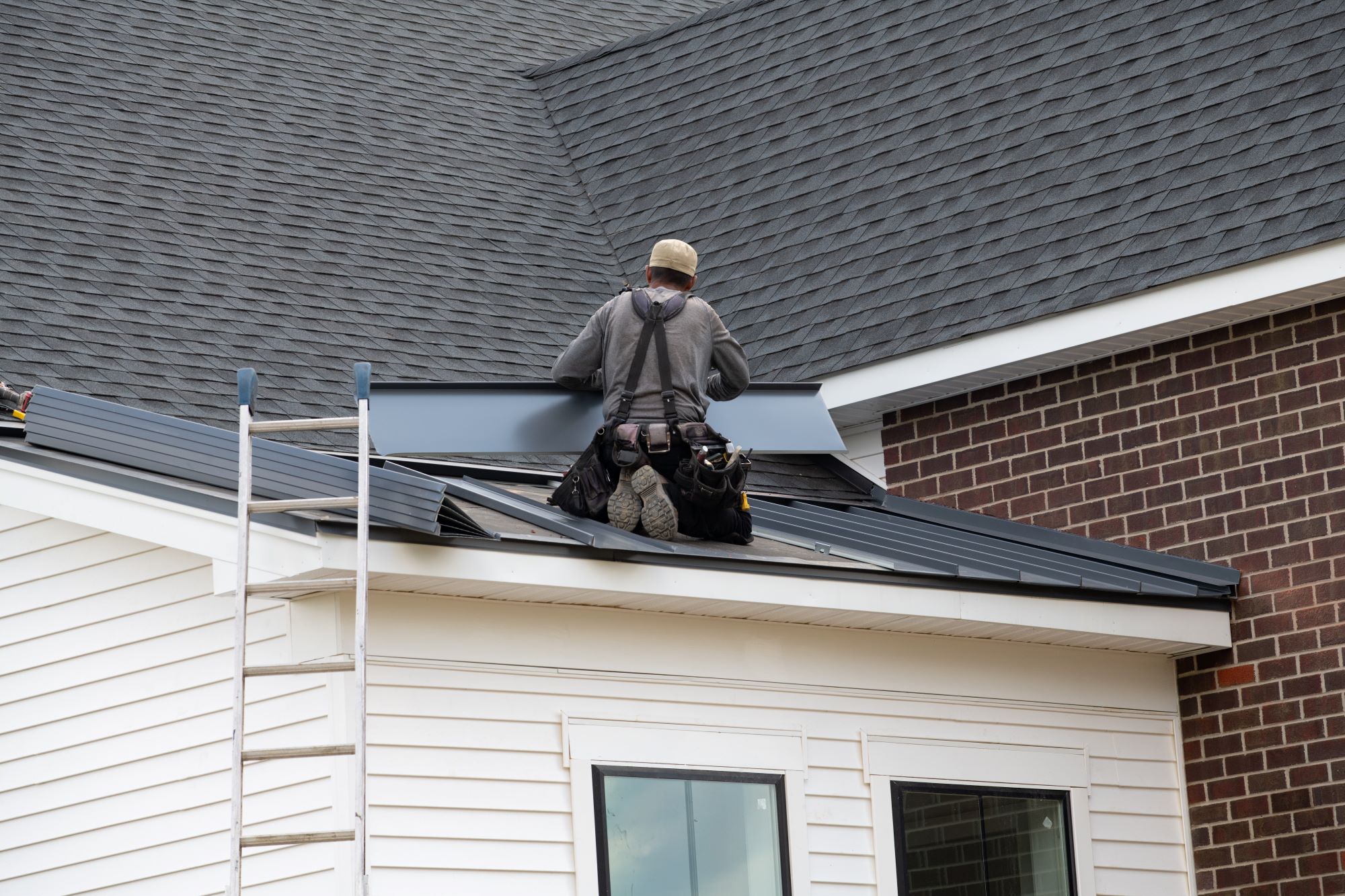Discovering a leak in your roof can be a concerning experience for any homeowner or property manager. A leaky roof can lead to significant damage if not addressed promptly, including structural deterioration, mold growth, and damage to interiors. To mitigate these risks and ensure the integrity of your property, it’s crucial to follow a systematic approach to addressing roof leaks. This guide outlines the steps you should take if you notice a leak in your roof, incorporating key aspects such as leaky roof repair, shingle replacement services, emergency roofing repair, and storm damage roof repair.
Step 1: Identify the Source of the Leak
The first step in addressing a leaky roof is to identify the source of the leak. This can be challenging, as water can travel from the initial entry point before manifesting as a leak inside your property. Look for signs such as water stains on ceilings, mold growth, or dampness along walls. In some cases, it may be possible to trace the leak back to its source from the attic or by examining the roof from the outside. If you are unable to locate the source, consider consulting a professional specializing in leaky roof repair.
Step 2: Contain the Immediate Damage
Once you’ve identified the leak, the next step is to contain any immediate damage. Place buckets or other containers under the leak to catch dripping water and move any furniture or valuables out of the way to prevent water damage. If the leak is severe, consider taking temporary measures to cover the affected area on the roof with a waterproof tarp until repairs can be made.
Step 3: Contact Professional Roofing Services
For a lasting solution, it’s essential to contact professional roofing services. Specialists in leaky roof repair can conduct a thorough inspection to assess the extent of the damage and determine the most appropriate course of action. Whether the solution involves shingle replacement services, emergency roofing repair, or storm damage roof repair, a professional will have the expertise and equipment necessary to address the issue effectively.
Step 4: Evaluate the Need for Shingle Replacement Services
In many cases, a leak may be the result of damaged or missing shingles. Shingle replacement services can address these issues, preventing further water ingress. A professional roofer can assess whether shingle replacement is sufficient or if more extensive repairs are needed. It’s important to match the new shingles with the existing roofing material to ensure a uniform appearance and optimal protection against future leaks.
Step 5: Consider Emergency Roofing Repair
If the leak is causing significant water intrusion and poses an immediate threat to the safety and integrity of your property, emergency roofing repair services may be necessary. These services are designed to provide rapid response to prevent further damage, especially following severe weather events or when a leak is discovered outside of normal business hours. Emergency repairs may involve temporary solutions that will need to be followed up with more permanent repairs.
Step 6: Addressing Storm Damage Roof Repair
Leaks often occur as a result of storm damage. If your property has recently been subjected to severe weather, such as heavy rain, hail, or high winds, it’s crucial to inspect your roof for damage. Storm damage roof repair may involve more comprehensive solutions, including the replacement of larger sections of the roofing system. A professional roofing contractor can assess the extent of storm damage and recommend the appropriate repairs to restore the roof’s integrity.

Step 7: Follow Up with Preventative Measures
After the immediate leak has been addressed, consider taking preventative measures to reduce the risk of future leaks. This may include regular inspections of your roof, cleaning gutters and downspouts to ensure proper drainage, and trimming overhanging tree branches that could damage the roof. Preventative maintenance can extend the life of your roof and help avoid the need for emergency repairs in the future.
Step 8: Review Your Insurance Coverage
If the leak and the ensuing damage are significant, review your homeowners’ insurance policy to determine if the repairs are covered. Many policies cover damage resulting from unforeseen circumstances, such as storm damage. Contact your insurance company to file a claim if applicable. Document the damage and keep records of any repair work done, as this information will be necessary for the claims process.
Step 9: Monitor the Roof Post-Repair
Following any repair work, it’s important to monitor the condition of your roof, especially during subsequent rainstorms, to ensure that the leak has been effectively addressed. If you notice any signs of water ingress, contact the roofing contractor who performed the repair to discuss further action.
Conclusion
Discovering a leak in your roof requires prompt and decisive action to prevent further damage to your property. By following the steps outlined above, you can effectively address the issue, from identifying the source of the leak and containing immediate damage to engaging professional roofing services for repair or replacement. Whether the solution involves shingle replacement, emergency repairs, or storm damage, the key is to act swiftly and rely on the expertise of professional roofers to restore the integrity and safety of your roof.

